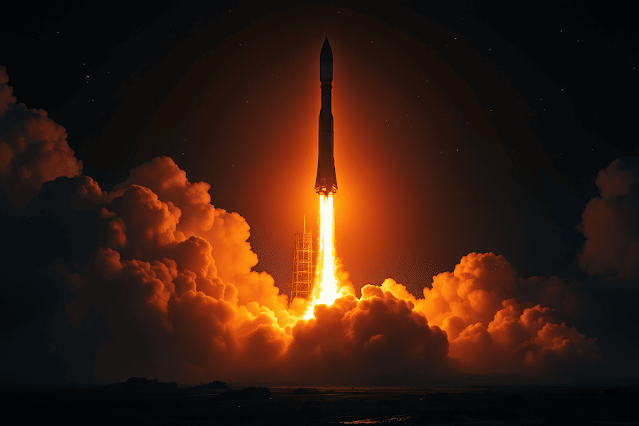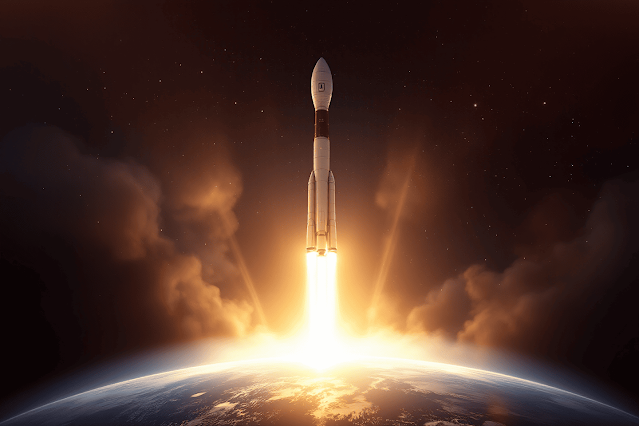Have you ever looked up at the sky and wondered how satellites actually get up there? It’s not magic — it’s a jaw-dropping mix of physics, engineering, and raw power. Satellite launch vehicles are behind everything from GPS to global communication to exploring other planets. Without them, your smartphone wouldn’t be so smart, and weather forecasts would be little more than educated guesses.
In this post, we’ll dive deep into what satellite launch vehicles are, how they work, and why they are the unsung heroes of our space age. Whether you're a space enthusiast or just mildly curious, get ready to discover the power and precision that push satellites into orbit and redefine our connection with the universe.
What is a Satellite Launch Vehicle?
A satellite launch vehicle is essentially a powerful rocket designed to transport a satellite from Earth's surface into orbit. It’s like the ultimate delivery service — but instead of packages, it launches multi-million-dollar instruments into the vacuum of space. These vehicles must overcome Earth's gravity, penetrate the atmosphere, and insert their payload precisely into a designated orbit. That’s no small feat.
Typically composed of multiple stages, each filled with fuel and designed to detach after use, launch vehicles maximize efficiency by shedding weight as they ascend. There are two main types: solid-fuel rockets and liquid-fuel rockets. Some advanced models even combine both, creating hybrid systems that balance power and control.
Satellite launchers play a vital role in various domains such as climate monitoring, global communication, scientific research, military defense, and GPS systems. Every time you check the weather app or navigate with your phone, thank a satellite — and by extension, its launch vehicle.
The Physics Behind Launch Vehicles: Newton's Third Law
If you’ve ever heard “for every action, there is an equal and opposite reaction,” then congratulations — you already know the core principle behind rocket propulsion. This is Newton’s Third Law in action. When a rocket expels high-speed gas from its engines, it generates an opposite force that propels the vehicle upward. It’s like blowing air out of a balloon and watching it fly in the other direction.
This principle is executed with staggering complexity. Combustion of fuel — either solid or liquid — produces immense heat and pressure, which pushes gas out through a nozzle. That force is what lifts the rocket. The heavier the rocket, the more thrust required. That’s why launch vehicles have to carry so much fuel just to break free from Earth’s gravity.
| Fuel Type | Characteristics | Usage |
|---|---|---|
| Solid Fuel | Easy to store, ignites quickly, hard to control | Ballistic missiles, military rockets |
| Liquid Fuel | Can throttle and restart, requires complex plumbing | Most orbital launch vehicles |
Tsiolkovsky Rocket Equation
Here’s where it gets a bit math-y, but stick with me — it’s worth it. The Tsiolkovsky rocket equation explains how a rocket's velocity changes as it burns fuel. It's one of the foundational formulas in astronautics, and it goes something like this: Δv = ve × ln(m0 / mf)
Here, Δv is the change in velocity (basically, how fast the rocket can go), ve is exhaust velocity, m0 is initial mass, and mf is final mass after fuel is burned. The natural logarithm (ln) gives us a ratio.
- A higher exhaust velocity means a more efficient engine.
- Lower final mass increases Δv — so multi-stage rockets ditch empty fuel tanks.
- The equation helps engineers design rockets with just the right amount of fuel.
Key Components of a Satellite Launch Vehicle
To truly appreciate how a satellite gets to space, we need to take a look inside the machine that makes it happen. A satellite launch vehicle isn’t just a giant tube of fire — it's a marvel of engineering composed of multiple systems working in harmony. Let’s break it down.
Propulsion System
This is the engine room — literally. Whether it’s solid, liquid, or hybrid fuel, the propulsion system provides the thrust needed to lift the rocket off the ground and navigate through various stages of flight. Liquid systems allow for better control and restart capability, which is crucial for placing payloads precisely.
Structural System
Built to endure extreme vibrations, pressure changes, and heat, the structural system is the vehicle's skeleton. It includes the payload fairing (protective covering), fuel tanks, and stage adapters. Lightweight yet strong materials like aluminum-lithium alloys or carbon composites are often used to keep mass low and performance high.
Guidance and Control System
The rocket doesn’t just fly blind. Using gyroscopes, accelerometers, GPS modules, and computers, the guidance system monitors position and orientation. The control system adjusts the rocket’s trajectory in real-time using actuators and thrust vectoring. It’s like a hyper-precise autopilot steering a $100M bullet.
Staging Sequence of Satellite Launch
Rocket staging is one of the cleverest engineering tricks in aerospace. Rather than carrying the same heavy shell all the way to orbit, launch vehicles shed parts as they go — like a space-bound onion. This improves fuel efficiency and boosts performance.
| Stage | Function |
|---|---|
| First Stage | Lifts rocket through the lower atmosphere with maximum thrust |
| Second Stage | Continues ascent to orbital altitude after the first stage is jettisoned |
| Payload Deployment | Releases the satellite into its designated orbit |
How Satellites Enter and Stay in Orbit
Just throwing a satellite into the sky doesn’t work. To orbit Earth, a satellite must achieve a balance between its velocity and Earth’s gravity — essentially falling around the planet forever. This delicate dance depends on altitude and speed.
- LEO (Low Earth Orbit): 500–1500 km altitude; used for Earth observation and communications.
- GEO (Geostationary Orbit): ~35,786 km; satellite appears fixed over one point on Earth.
- MEO (Medium Earth Orbit): Often used for navigation systems like GPS.
Maintaining that orbit sometimes requires minor adjustments, which satellites handle using small onboard thrusters. Without those, space debris or gravitational anomalies could nudge them out of position. So yeah — staying in orbit is just as tricky as getting there.
Frequently Asked Questions
A rocket is a general term for any propulsion vehicle, while a launch vehicle is a specific type of rocket used to send payloads into space.
To maximize efficiency. Shedding empty fuel tanks reduces weight, allowing the rocket to reach higher speeds with less energy.
Yes, most have small thrusters to make orbital corrections or avoid collisions with debris.
Its mission. For example, communication satellites use GEO, while Earth-observing satellites favor LEO for better resolution.
SpaceX’s Falcon 9. Its first stage can land back on Earth and be reused for multiple missions, drastically cutting costs.
Yes. The Nuri (KSLV-II) rocket was developed using domestic technology and successfully launched satellites into orbit, marking a major milestone.
So next time you look up at the night sky and see a satellite passing overhead, remember the incredible journey it took to get there — from Earth to orbit via an intricately engineered launch vehicle. These marvels of physics and engineering aren’t just about space. They’re about connecting people, protecting nations, studying our planet, and unlocking the future. If this sparked your curiosity even a little, let’s keep exploring together. Drop your thoughts or questions in the comments — I’d love to hear your take!
Related Resources
- NASA Launch Vehicle Overview
- SpaceX Falcon 9
- KARI – Korea Aerospace Research Institute
- YouTube – How Rockets Work (Kurzgesagt)
- ESA – European Launch Vehicles





Post a Comment